Last Sunday of the first month in new year already! Can you believe it? At this rate, we’ll be out of the eighties and rolling through the nineties before you can finish off that Donruss Roberto Clemente puzzle or round out your Fleer logo sticker collection.
At least our Topps wax packs will always have bubble gum in them, though, right?
I mean, right?
While you ponder the future, why don’t you get ready for today’s cardboard adventure by lacing up your Schus. It’s Rick’s birthday, after all, and I’m in the mood for some baseball cards of guys who had the task of replacing legends.
So, here they are…
1963 Topps Tom Tresh (#470)
Tresh wasn’t supposed to replace Mickey Mantle in center field.
No one would have been so bold as to suggest that, especially not when the Mick was still in his prime and won the MVP award when Tresh was a rookie in 1962.
And not when Tresh won the Rookie of the Year Award that same year as a shortstop. That’s how Tresh shows up on his 1962 Topps rookie card, too — as a shortstop.
But late in 1962, Tony Kubek was back from National Guard duty, so manager Ralph Houk plugged him back in as the team’s shorstop. That pushed Kubek to left field, alongside Mantle in center.
And so we find Tresh as an outfielder on his 1963 Topps card, the one with the golden All-Star Rookie trophy. And when Mantle broke his foot in June of ‘63, Tresh slid to his left to take over in center, with Hector Lopez stepping up in left.
Mantle was back in the saddle in center for most of 1964, but still missed lots of time to injury and rest. And in 1965, the Yanks moved him to left. When the Commerce Comet wasn’t playing up the middle, center fell to Tresh…again.
Not only that, Tresh often slotted in as New York’s cleanup hitter when Mantle was out. He proved himself capable of 25-30 homers a season, but he struggled with his batting average.
When Kubek retired after the 1965 season, Tresh seemed to be in line to return to short, but he ended up splitting 1966 mostly between third base and left. Mantle was back in center after a season at first, though he started fewer than 100 games.
Tresh finally made it back to shortstop in 1967, the same year Mantle moved to first base for good. Joe Pepitone became the next guy up to replace the Mick in center, and he did that for most of two seasons…until he replaced the legend at first base in 1969 after Mantle retired.
As for Tresh, the first man to replace Mickey Mantle in center field for an extended period finished his career in 1969 with Tigers after the Yanks traded him for Ron Woods. And Tresh ended up at shortstop, right where he started, after a prolonged game of musical chairs.
1976 Topps Larry Haney (#446)
Mr. Haney first came into the public consciousness with his weekly attempts to take advantage of city-slicker Oliver Wendell Douglas when the latter moved to the country for some fresh air.
If you don’t recall Haney from those late-1960s exploits, though, you might remember him as the guy who took over behind the plate for the dynastic A’s of the 1970s when Gene Tenace began hanging out at first base in 1976.
As you can see from the card above, Haney was already prepped for duty by that point, crouched and fully mustachioed.
In 88 games with those 1976 A’s, including 66 starts at catcher — most on the team — Haney hit .226 with no homers and 10 RBIs. When Tenace walked as a free agent after the season, that stellar performance got Haney…sold to the Brewers.
Tenace’s replacement was gone just like that, but Haney’s replacement had a story of his own. See, the Pirates traded Manny Sanguillen to the A’s in November of 1976 in exchange for manager Chuck Tanner.
Baseball rocks.
1985 Donruss Rich Schu (#448)
Happy birthday to Rick Schu, one of the most disliked men from my childhood.
It wasn’t Schu’s fault that I disliked him, and I’m sure he wouldn’t have cared a whit if he had known my feelings. All the man did to deserve my ire was come up through the Phillies system as a third baseman. One who could hit around .300 with double-digit power.
That was enough to make Phils brass think Schu was the man who could “relieve” Mike Schmidt at third base and give the future Hall of Famer a chance to pad his hitting stats while playing first base. Or something.
So after a cup of coffee at the end of 1984 and a solid start at Triple-A Portland in 1985, Schu landed in Philly at the end of May.
Boom!
The Phils had their new third baseman and their new first baseman, too.
Collectors noticed enough to make Schu’s 1985 Donruss rookie card — his only RC available in packs that summer — something of a must-have. Not a Dwight Gooden or Buddy Biancalana must-have, you understand, but a must-have just the same.
In 111 games that summer, Schu hit .252 with seven home runs and 24 RBI. He also committed 20 errors, good for a .933 fielding average — .948 was the National League average for third basemen.
In 1986, Schmidt was back at third just in time to win his third MVP award. Schu, meanwhile, was mostly a bench player, though he did get 42 starts on nights when Schmidt slid back over to first base.
Mostly, though, for the Phils, the Schu didn’t fit quite like they thought he would.
1986 Topps Traded Kurt Stillwell (#104T)
If you watched a Reds game from 1970 through 1985, you could just about bet (yes, I said it) on seeing Davey Concepcion at shortstop. But with Pete Rose back in the fold, Dave Parker amping up the offense, Tom Browning coming off a 20-win rookie season, and the Reds starting to really stir up excitement on the Riverfront heading into 1986, change was brewing.
And since Davey entered that season at a spry but ripe 73 years old, there was growing sentiment that it was time for some new blood at short.
Luckily, the Reds were flush with young infield talent, including Jeff Treadway, Barry Larkin, Kurt Stillwell, and…well…Tom Runnells? OK, so maybe they weren’t flush, but they had promise for the future.
Stillwell was the first to break through, debuting in April 1986 and making 60 starts at short through the rest of the season — most on the team. After hitting .229 with no homers and 26 RBI, along with six stolen bases, Stillwell was back for more in 1987.
But this time, he had to split time between short, third, and second as Larkin took over at shortstop.
Stillwell was young, though, and he had hustle or something. Which manager Charlie Hustle valued. So when Stillwell’s 1986 Topps Traded card hit the wire between his first two seasons, it was a pretty popular buy.
Well, at least for some of us.
Personally, I still consider this beauty a sort of hobby Mona Lisa, right down to Stillwell’s ambiguous expression — is that disbelief, pre-sneeze anticipation, or nausea?
1993 Topps Scott Cooper (#655)
If you were the 1992 Boston Red Sox, how would you justify letting Wade Boggs walk to the rival New York Yankees in free agency after the season?
Judging by the available evidence, general manager Lou Gorman considered that:
Boggs would be 35 in 1993.
Boggs’ batting average cratered to .259 in 143 games in 1992.
Boggs would still cost a bunch.
Youngster Scott Cooper was waiting in the wings and had made 47 appearances at third in 1992.
Cooper hit .276 in 1992, even better than he had in the minors.
Cooper was working cheap.
The Sox were going nowhere fast.
And so Butch Hobson plugged Cooper in at third in 1993, and the lefty batter responded by hitting .279 with nine homers and 63 RBI while playing above average defense at third and making his first All-Star appearance.
By then, Cooper had been popping out of our packs for a few years already, but the 1993 cards were the first that showed him as Boston’s third baseman when the job was truly his. The Topps card from that summer (above) is sorta fitting, too, because we see Cooper doing some work on the bases — he registered a career-high five steals that year.
Cooper was off to an even better start in 1994 before the strike wrecked everything. But then, in April 1995, the Sox traded him and Cory Bailey to the Cardinals for Rheal Cormier and Mark Whiten.
That move made room for “young” Tim Naehring (28) at third. Naehring hit .307 with ten home runs and 57 RBI.
A bit of a happier ending than the other stories in our little this-here book.
—
So, which “replacements” for high-profile players stand out most for you, good or bad? I’d love to hear your picks!
Now if you’ll excuse me, I have to go feed my groundhog. February is just a few days away, after all.
Thanks for reading.
—Adam




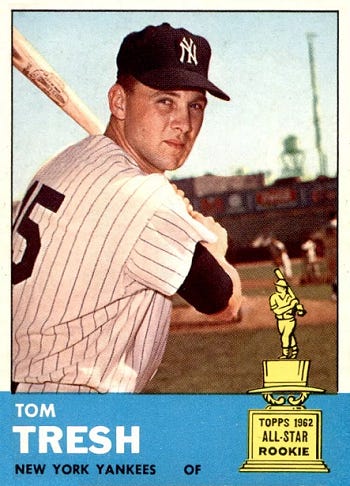
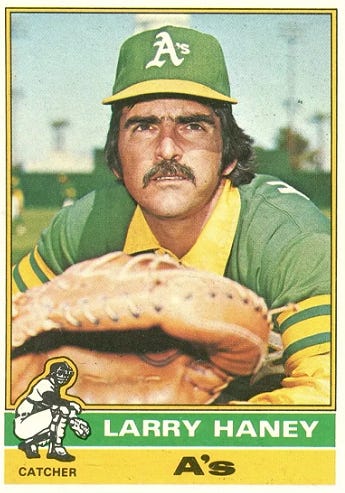
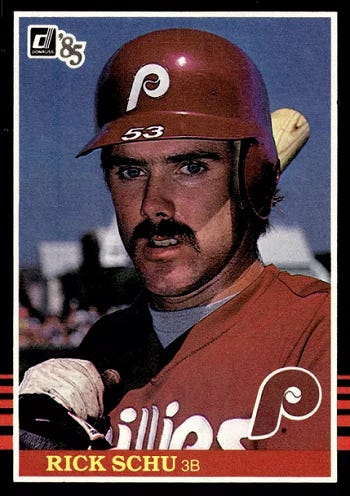
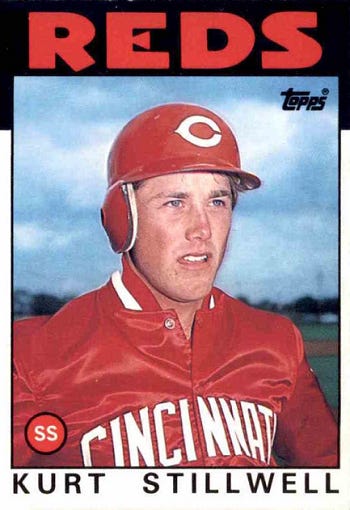
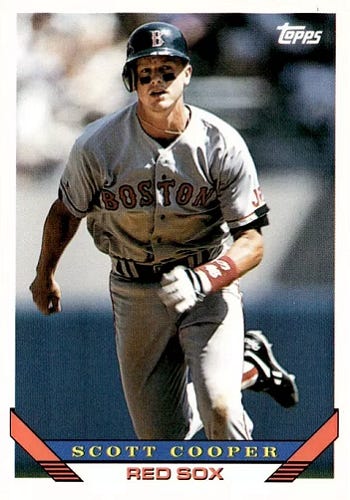
Stillwell ended up going to KC, which had been weak at SS (all due respect to Biancalana), and made his only ASG in '88. My friends and I loved him, though he kind of regressed over the next two years and ended up playing his way out of town. But he was a supporting cast member on the '89 Royals, the second best KC team of my childhood (after the 85 champs), which had the bad timing of being in the same division with a juggernaut A's team in an era without wild cards. So, I'll always like the guy.